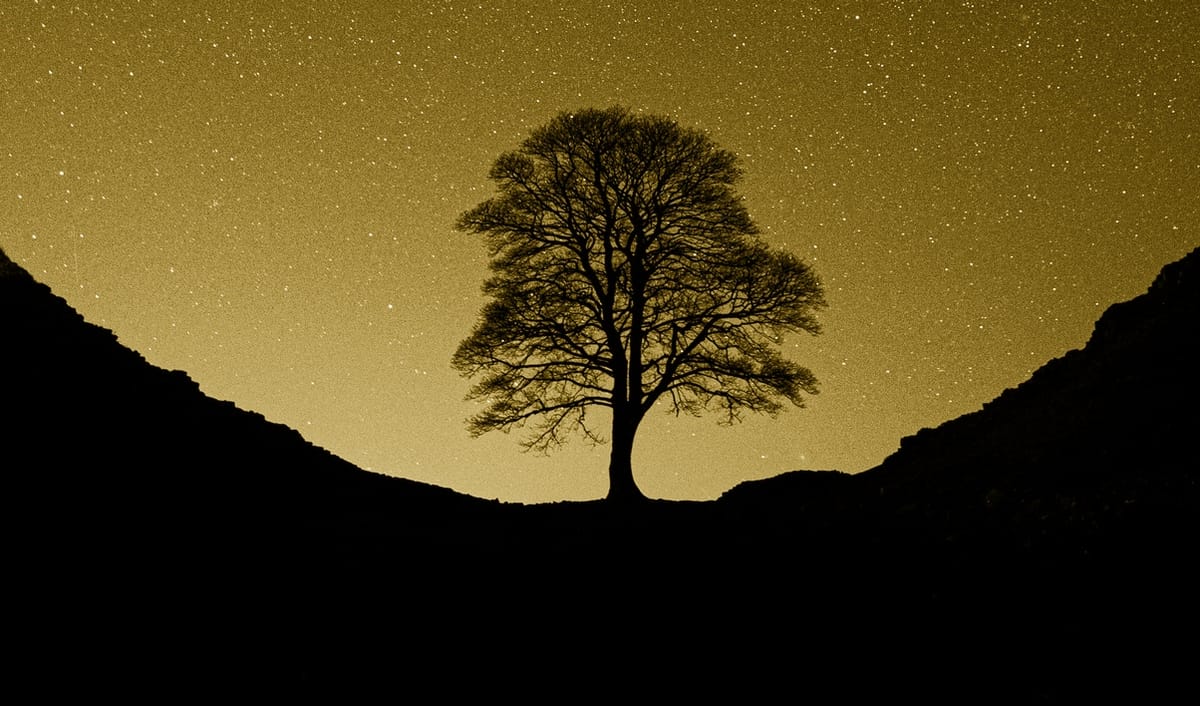Step inside The Twice Brewed Inn, and you’re greeted by a large photographic print. It shows imposing dolerite crags, formed hundreds of millions of years ago, with Roman fortifications running along the top. This, manager Steve Blair says, is the “Barbarian’s View” of Hadrian’s Wall. “Getting any barbarians up there would be tricky,” he adds.
Blair describes the landscape to me, but falters half way along, searching for a way to articulate an absence. “And then, of course, that’s where the Sycamore Gap was.” He corrects himself: “Well, the Sycamore Gap is still there — but that’s where the tree was.”
A gap where the gap used to be.
The photograph was taken after the sycamore was cut down on the night of 27 September, 2023. Which makes the entrance one of the few places in the pub, its gardens, the adjoining brewery and shop where you can’t see an image of the tree.
The felling is discussed in tones the Romans might have saved for those beyond the wall, outside of their society: inconceivable, mysterious, barbaric. What could possibly motivate someone to trek to the middle of nowhere, in the teeth of Storm Agnes, hauling a chainsaw up a steep escarpment in the dark? To commit such a nihilistic, seemingly futile violation of the landscape, the local culture and people’s innocent pleasure?
“We still can’t comprehend it,” says Stef Dillon, who works in the brewery’s tap room. “That somebody could do something so destructive… We can't empathise or identify with someone who would do that.”
Eighteen months on, “Why?” is still the question asked of the pub’s employees every day. Or as I heard a local journalist put it bluntly to one of the accused following his hearing last year: “Why did you do it, mate?” Like The Twice Brewed’s customers, he seemed more to be voicing his bafflement than expecting an answer.
Next week, Daniel Graham and Adam Carruthers, two men in their 30s from neighbouring Cumbria, will go on trial for criminal damage to the tree and Hadrian’s Wall totalling £623,335. Both of the accused have pleaded not guilty. Whatever transpires, the felling has consequences beyond the criminal. The Twice Brewed Inn has, for years, been a destination in itself. Customers come while walking the wall, or visiting The Sill next door: a £14.8 million visitor’s centre and museum about the British landscape, built to frame what was once a perfect view of the Sycamore Gap.
The tree’s fame rose alongside the pub’s own transformation. When Blair first came to work here in 2004, 30 employees ran the pub, kitchen and guest accommodation. By the time he returned in 2019, after a six-year hiatus, the new ownership had added a brewery, tap house, planetarium and star-gazing cabins. People visited the Sycamore Gap every day. Photographers stayed overnight to capture the tree at sunset and sunrise. The inn was serving 5,000 customers a week. Today, it employs 70. And an image of the tree features on everything.
Register for free to read this article.
